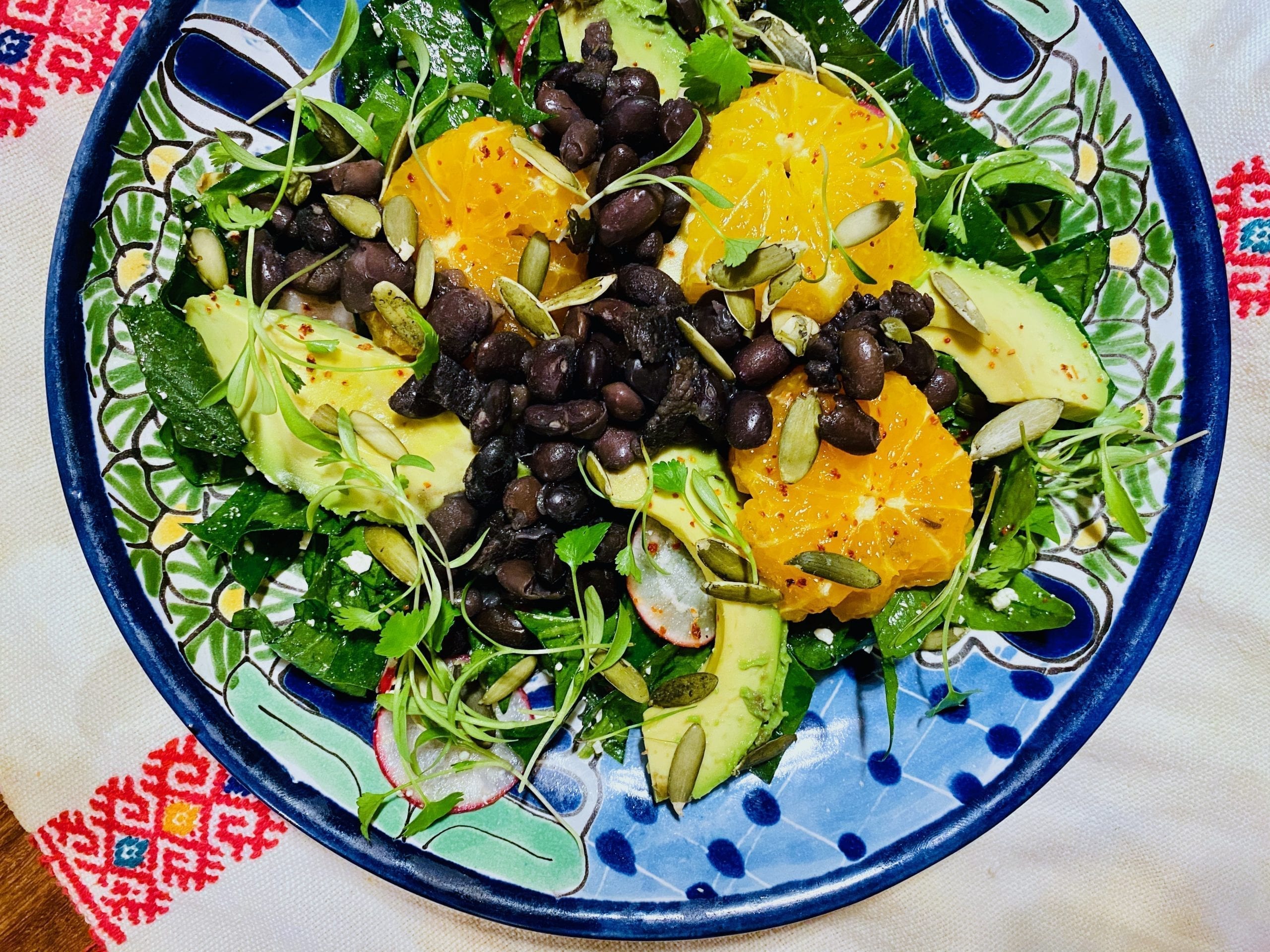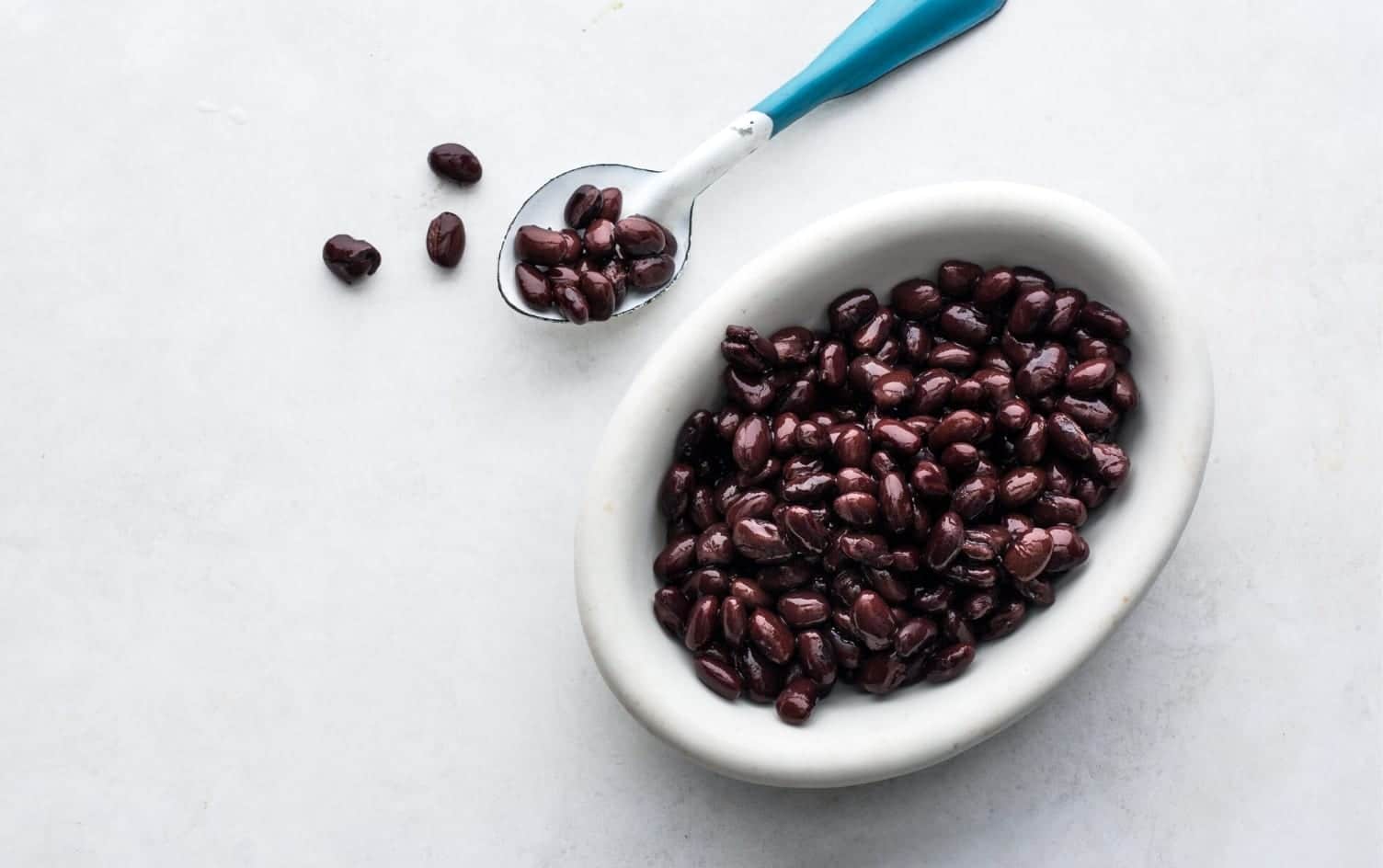Maybe you found a bag of black beans or a can of black beans in the pantry. Or maybe you’re standing in the grocery aisle thinking “what on earth do I do with these?” The answer is there are so many things to do with black beans, and this little primer gets you off on the right foot toward some tasty adventures.
BUYING BEANS
Buy your dried beans the same way you would your meat or produce: Find a source you trust, and pay a little extra for higher quality. Heirloom beans carry more complex flavors than the varieties you’ll find in your standard bag of supermarket legumes. When you cook them properly, they barely need any embellishment beyond salt.
When it comes to canned beans, read your labels. Many canned bean varieties contain extra stabilizers, colors or additives that are unnecessary. Look for organic beans, with as few ingredients as possible and little added salt. (This way, you can control the amount of sodium added.)
You can’t really tell how old beans are by smelling them, and beans don’t really go “bad.” But, the older they are, the longer they take to get tender — and super ancient ones sometimes won’t get tender at all. So purchase small quantities, rotate your stock and toss anything that gets dusty.

PREPPING AND COOKING BLACK BEANS
Dried Beans: The myths around how to cook “fussy” dried beans run deep, but here’s what you need to know about how to prepare these nutritious powerhouses. While dried beans don’t have to be soaked before cooking, they’ll take longer to cook if they aren’t. They’ll also be difficult to digest and nearly impossible to reap nutrients from. This is because beans are seeds that protect their vital nutrients by coating themselves in a natural toxin called “phytic acid.” When we ingest this toxin, it makes beans difficult to digest and makes their nutrients difficult to absorb. Soaking beans with a bit of salt and acid before cooking dissolves this acid, and makes them cook faster. To soak and cook the beans, simply cover them with several inches of cold water, add a pinch of salt and a tablespoon of vinegar; refrigerate overnight. Drain and rinse them the following day and they’re ready to cook.
Once they’ve been soaked, you can cook them on the stovetop or in a pressure cooker. To cook them on the stovetop, transfer the beans to a heavy pot and add cold water to cover by a couple of inches. Bring them to a gentle simmer, skimming off any foam that rises to the surface. (Aggressive boiling might cook them faster, but they’ll be more likely to break apart.) Now’s the time to add aromatics like onions, chile or garlic, along with dried and/or fresh herbs like bay leaves, thyme sprigs, rosemary sprigs, etc. Hold off on adding salt and acidic ingredients like tomatoes until the end or your beans become tough and chewy. Cook, partially covered, until the beans are tender, simmering gently to make sure they don’t fall apart. Once tender, add salt until the broth is well-seasoned. (Taste the liquid for seasoning, not the beans since they’ll need about half an hour in the liquid to absorb that salt.) Then, add tomatoes or other acidic components and heat a little bit longer to encourage flavors to meld.
If you don’t plan on enjoying the beans straight away, let them cool completely in their cooking liquid. The beans keep for about five days refrigerated, and are ready for breakfast, lunch or dinner at a moment’s notice. Beans also freeze beautifully, so make a little extra and freeze in containers for a later date.
To make black beans in a pressure cooker, simply follow your cooker’s instructions for beans. Pressure cookers use hot steam to cook foods faster, which means you have delightfully creamy beans in about 30 minutes. Beans cooked in a pressure cooker take just minutes, but the cooling, storage and enjoyment principles of stovetop beans still apply.
Canned Beans: Most canned beans are not soaked before cooking, which means they’re more difficult to digest and their nutrients aren’t as available, but they are very easy to use in that they require no cooking at all. Simply pop open the can, drain out the liquid and serve them straight, warm them or doll them up with other ingredients and your meal is made!
NEXT-LEVEL BLACK BEANS
Once you’ve got your bean purchasing and cooking basics mastered, it’s time to sass them up. These tips take your beans from simple to stellar:
Add Fat and Salt: Beans without fat or salt are like bread without any butter — tasteless. While rich in protein, beans lack intrinsic fat, and our bodies need healthy fats to digest and function properly, so adding a nice dollop of ghee, olive oil or even bacon grease to your beans along with several pinches of salt results in stellar beans.
Add Meat: Beans also pair well with meat, both on the plate and when mingling flavors. You could serve your black beans alongside a nice cut of meat, but you could also use small amounts to season it. This concept is economical, and a healthful way to reap the benefits of multiple proteins in a single bowl in a very delicious way.
Add Acid (Just Know When): Tangy ingredients like tomatoes, vinegar and citrus boost the flavor. But, it’s critical you add acid at the right time or the skin of your beans may get tough. Add acid when your beans are almost done cooking for the best, most delicious results. This can look like a handful of fresh tomatoes or a can of crushed ones. You can also add a squeeze of lime or lemon.
Save That Cooking Liquid: Liberally seasoned with salt and aromatics, the broth your beans cooked in is one of the best parts of making them. Save the broth and use it as a stock, a sauce or simply serve it with those delicious little beans.
BEANS, BEANS, MAGIC BEANS!
Now that you’ve got homecooked, well-seasoned black beans, it’s time to put them to good use. Here are some favorite ways to put them to delicious work:
- Tacos: A few tortillas are all that’s likely standing between you and tacos for dinner (or breakfast or lunch.) Just about anything in your fridge can and should become tacos — salad greens, avocados, chopped fresh vegetables, favorite pickles, kimchi, you name it. Black beans are the perfect protein.
- Soup: If you’ve saved the stock from your beans, you can bolster it by adding a favorite stock or broth, to make it more “soupy” if need be. Then, add a can of tomatoes, a handful of cilantro, sliced red pepper and a squeeze of citrus.
- Salads: Perfectly cooked beans turn a simple salad into a luxurious lunch when tossed together with loads of citrus and fresh greens. Similar to tacos, anything you have makes a great mashup, but here’s a favorite, black bean salad.
- Dips: Cooked beans whip quickly into a dreamy dip that can be used as a sandwich spread, hummus alternative or even a filling for those tacos.

BLACK BEAN AND ORANGE SALAD
Ingredients
- 1 small hot red chili, thinly sliced
- 1/4 cup (60ml) olive oil
- 2 tablespoons fresh lime juice
- 2 teaspoons apple cider vinegar
- Kosher salt and ground black pepper, to taste
- 2 cups (120g) black beans, pre-cooked
- 3 blood or navel oranges
- 1/2 small avocado
- 3 small radishes
- 1 cup (30g) baby greens or torn spinach
- 1/2 cup (15g) cilantro leaves, divided
Directions
Combine chili, oil, lime juice and vinegar in a medium bowl. Season with salt and pepper. Add beans and toss to coat. Let sit 10 minutes to allow flavors to meld.
Meanwhile, using a small knife, remove peel and white pith from the oranges. Cut crosswise into 1/4-inch thick rounds.
Add oranges, avocado, half of greens and cilantro to beans. Season with salt and pepper and toss to combine.
Serve bean salad on a bed of the remaining greens and cilantro. Enjoy immediately.
Serves: 4 | Serving Size: 1 cup
Nutrition (per serving): Calories: 526; Total Fat: 17g; Saturated Fat: 2g; Monounsaturated Fat: 2g; Cholesterol: 0mg; Sodium: 307mg; Carbohydrate: 80g; Dietary Fiber: 17g; Sugar: 15g; Protein: 20g
BLACK BEAN DIP WITH FRESH CILANTRO
Ingredients
- 2 1/2 cups (150g) cooked black beans, rinsed and drained
- 1/2 cup (30g) yellow onion, chopped
- 1/3 cup (10g) cilantro, chopped
- 1 clove garlic, minced
- 1 small jalapeño, seeds removed and diced
- 2 tablespoons fresh lime juice
- 1/4 teaspoon ground cumin
- 1/4 teaspoon chili powder
- 1/2 teaspoon kosher salt
- 1/4 teaspoon black pepper
- 2 tablespoons cotija cheese for garnish, optional
Directions
In the bowl of a food processor or blender, combine the black beans, onion, cilantro, garlic, jalapeño, lime juice, cumin, chili powder, salt and black pepper. Blend until smooth.
Transfer the black bean dip to a bowl and garnish with cotija cheese, if using. Omit if you wish to keep it dairy-free. Serve with tortilla chips or cut up vegetables.
Serves: 6 | Serving Size: 1/4 cup
Nutrition (per serving): Calories: 162; Total Fat: 2g; Saturated Fat: 0g; Monounsaturated Fat: 0g; Cholesterol: 0mg; Sodium: 745mg; Carbohydrate: 25g; Dietary Fiber: 5g; Sugar: 3g; Protein: 9g
Put non-perishables, frozen veg, canned beans and other staples to good use by searching for recipes our Pantry Staples collection in the MyFitnessPal app under “Recipe Discovery.”




